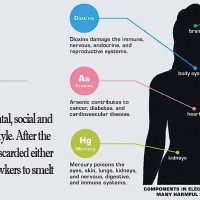- Saturday, 27 December 2025
Scope And Potentiality Of AI Applications
Artificial Intelligence (AI) is rapidly reshaping industries, human works, way people think and their work, attitude building and revolutionising human interactions with technology. This article tries to examine the different types of AI, ranging from Narrow AI to the theoretical concept of Superintelligent AI.
It is about the capabilities and limitations of each type, highlighting the transformative potential of AI in various domains. It dwells on navigating applications and solving real-world challenges by understanding the complexities of the sector. AI is especially used in automation, gaming, cyber security, predictive analysis, personalisation, natural language processing, image and speech recognition, finance, healthcare, quantum computing, genetic algorithm, anomaly detection, autonomous vehicles, computer version, and scientific research.
Artificial Intelligence (AI) refers to the simulation of human intelligence in machines that are programmed to think, learn, and to solve problems like human beings. It encompasses a broad range of technologies and techniques, including machine learning, natural language processing, computer vision, and robotics. AI systems can perceive the environment, analyse data, make decisions, and achieve specific goals. AI mainly operates as a pattern-recognition tool, capable of processing data at a scale far surpassing human capacity but it cannot entirely replace human involvement.
In today's technological age, the term "AI" often focuses machine learning and deep learning, representing a subset of capabilities with which most enterprises interact. Now, AI is being powerful day by day due to its capabilities.
Despite these constraints, AI’s success in recognising patterns and deriving insights from data is important for addressing real-world challenges. During AI development period, it is essential to consider by ethical mind set. We can control the transformative potential of AI while mitigating risks, adopting a more equitable and inclusive technological future by acknowledging these realities and prioritising ethical principles.
Artificial intelligence possesses remarkable capabilities for recognising patterns at an extensive scale. Modern AI systems excel in the following tasks:
Image recognition: AI can accurately identify objects, people, scenes within images or videos by enabling applications like facial recognition, object detection, and autonomous driving.
Natural language understanding: AI can understand and interpret human language, facilitating tasks such as speech recognition, language translation, sentiment analysis, and chatbot interactions.
Data analysis and insights: AI can analyse vast amounts of data from diverse sources, uncovering hidden correlations, trends, and insights that may avoid human observers.
Anomaly detection: AI excel identifies differences in data patterns and helps to detect fraud and faults. Study has found that it could unusual behavior in various systems which is the great challenge to the world by AI in coming days to come. In such cases, human intervention and reasoning are indispensable for addressing complex or ambiguous scenarios through Act, policy, and directives.
Prediction and forecasting: AI models can forecast future outcomes based on historical data. It can notify likely cyber-attacks, sales forecasting, weather forecasting, election result prediction, and risk assessment.
Types of Artificial Intelligence
General (strong) AI: General AI is also called Artificial General Intelligence (AGI). It aims and practices to replicate human-level intelligence. This system possesses the ability to understand, learn, and perform any intellectual task that humans can do.
Narrow (weak) AI: Narrow AI, also known as weak AI, is designed to perform specific tasks within a limited domain. This type of system operates within predefined boundaries due to a lack of general intelligence. It performs tasks according to algorithmic instruction. So, it cannot generate its own idea and cannot provide its own decision. The answer or decision provided by such AI may not always be true.
Superintelligent AI: This AI surpasses human intelligence in many sectors of human life such as data analysis, program analysis, weather forecasting, disease diagnosis, etc. In theoretical expectation, at present, the concept of Superintelligent AI has raised both interest and worry within the AI community.
Reactive Machines: Reactive AI systems respond to inputs without any memory or past experiences. They operate based solely on the current input and lack the ability to form memories or learn from previous interactions. Examples include chess-playing AI systems or recommendation algorithms.
Limited Memory AI: AI systems with limited memory can store and retrieve information from past experiences to make better decisions. They become able to learn from historical data and information. So, they can provide future forecasting results in various fields. For example, self-driving cars can utilise historical data for driving decisions. A home robot can assist with homework. In some way, clinical robot can take care of patients.
Theory of Mind AI: Theory of Mind AI aims to understand models, mental states, beliefs, and intentions of other agents. These systems can attribute thoughts, emotions, and intentions to other entities. They can predict behavior based on their understanding.
Self-Aware AI: Self-aware AI possesses human-like awareness and understanding of its own existence. These systems have a sense of consciousness and internal state, with self-reflective abilities to comprehend their own thoughts, actions, experience, idea, according to environmental impact. True self-aware AI remains largely speculative and beyond current technological capabilities.
Generative AI: Generative AI systems can autonomously create content, such as images, videos, music, or texts that closely resemble human-generated content. These systems utilise learned patterns and styles to generate new outputs. Examples include generative adversarial networks (GANs), which create realistic images, and language models like OpenAI's ChatGPT, which generate human-like text based on given prompts.
Finally, in the future, strength and future challenges of AI can force us to control its capabilities ethically so that it cannot harm our natural environment, society, culture, relationship, feeling, and human welfare. The current issue and concern are humans and human culture may be destroyed by the increasing use and misuse of AI. We could fully use its transformed potentiality to shape a brighter future for humanity by embracing AI as a tool for innovation and problem-solving.
(The author is an e-governance and IT specialist.)
















